42 High Street, Cosham, Hampshire, PO6 3AG
This pub stands on the site of a chemist’s, built in the 1840s, which housed Cosham’s first post office.
Prints and text about the Penny Post.
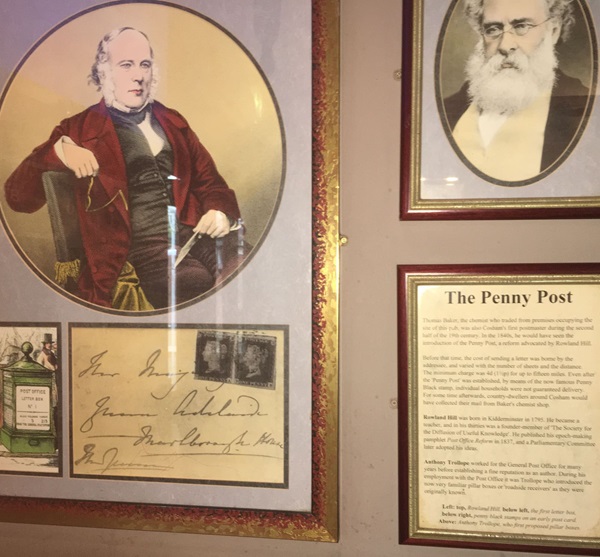
The text reads: Thomas Baker, the chemist who traded from premises occupying the site of this pub, was also Cosham’s first postmaster during the second half of the 19th century. In the 1840s, he would have seen the introduction of the Penny Post, a reform advocated by Rowland Hill.
Before that time, the cost of sending a letter was borne by the addressee, and varied with the number of sheets and the distance. The minimum charge was 4d (1½p) for up to fifteen miles. Even after the Penny Post was established, by means of the now famous Penny Black stamp, individual households were not guaranteed delivery. For some time afterwards, country dwellers around Cosham would have collected their mail from Baker’s chemist shop.
Rowland Hill was born in Kidderminster in 1795. He became a teacher, and in his thirties was a founder-member of The Society for the Diffusion of Useful Knowledge. He published his epoch making pamphlet Post Office Reform in 1837, and a Parliamentary Committee later adopted his ideas.
Anthony Trollope worked for the General Post Office for many years before establishing a fine reputation as an author. During his employment with the Post Office it was Trollope who introduced the now very familiar pillar boxes or roadside receivers as they were originally know.
Left: top, Rowland Hill, below left, the first letter box, below right, Penny Black stamps on an early post card
Above: Anthony Trollope, who first proposed pillar boxes.
A selection of post cards and letters.
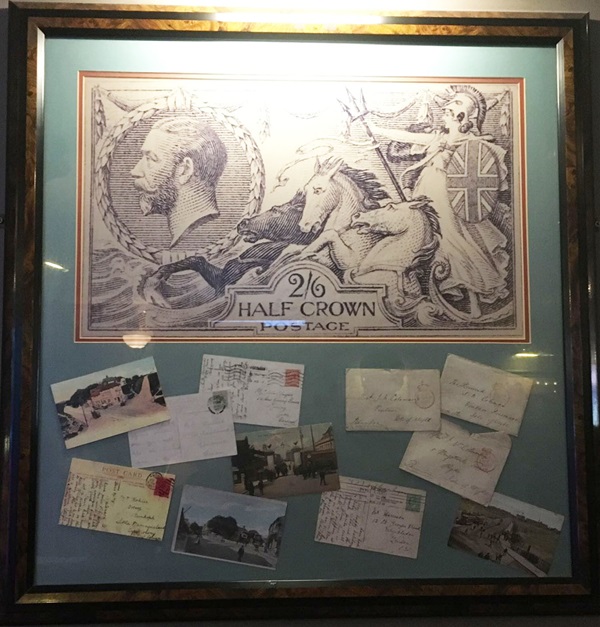
Prints and text about John Menzies.
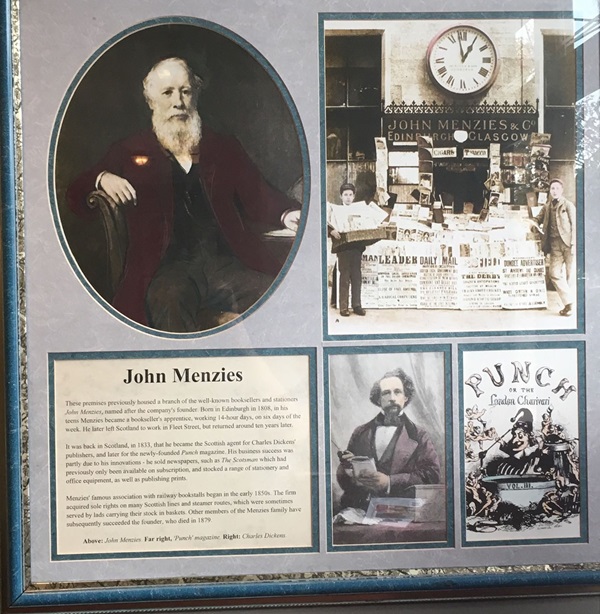
The text reads: These premises previously housed a branch of the well-known booksellers and stationers John Menzies, named after the company’s founder. Born in Edinburgh in 1808, in his teens Menzies became of bookseller’s apprentice, working 14-hour days, on six days of the week. He later left Scotland to work in Fleet Street, but returned around ten years later.
It was back in Scotland, in 1833, that he became the Scottish agent for Charles Dickens’ publishers, and later for the newly founded Punch magazine. His business success was partly due to his innovations – he sold newspapers, such as The Scotsman which had previously only been available on subscription, and stocked a range of stationary and office equipment, as well as publishing prints.
Menzies’ famous association with railway bookstalls began in the early 1850s. The firm acquired sole rights on many Scottish lines and steamer routes, which were sometimes served by lads carrying their stock in baskets. Other members of the Menzies family have subsequently succeeded the founder, who died in 1879.
Above: John Menzies
Far right: Punch magazine
Right: Charles Dickens.
Prints and text about local landmarks.
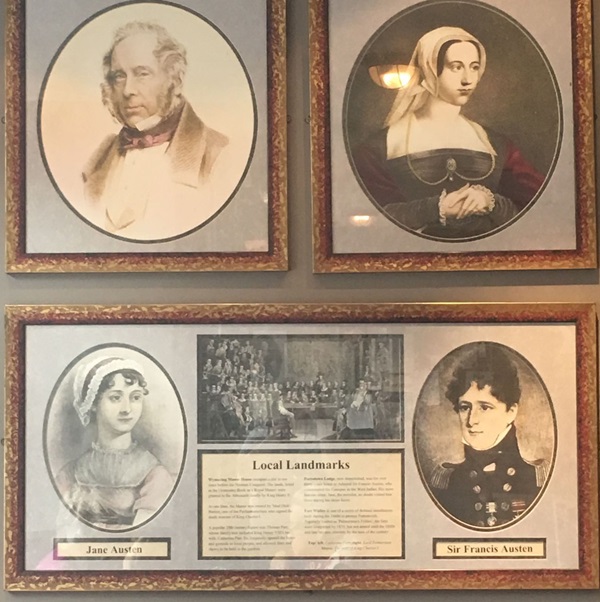
The text reads: Wymering Manor House occupies a site in use since before the Norman Conquest. The lands, listed in the Domesday Book as a Royal Manor, were granted to the Albemarle family by King Henry II.
At one time, the Manor was owned by Mad Dick Norton, one of the parliamentarians who signed the death warrant of King Charles I.
A popular 20th century squire was Thomas Parr, whose family tree included King Henry VIII’s last wife Catherin Parr. He frequently opened the house and ground to local people, and allowed fetes and shows to be held in the gardens.
Portsdown Lodge, now demolished, was for over thirty years home to Admiral Sir Francis Austen, who commanded the Canopus in the West Indies. His more famous sister, Jane, the novelist, no doubt visited him there during his shore leave.
Fort Widley is one of a series of defence installations built during the 1860s to protect Portsmouth. Popularly known as Palmerston’s Follies, the forts were completed by 1870, but not armed until the 1880s and had become obsolete by the turn of the century.
Top: left, Catherine Parr, right, Lord Palmerston
Above: The trial of King Charles I.
External photograph of the building – main entrance.
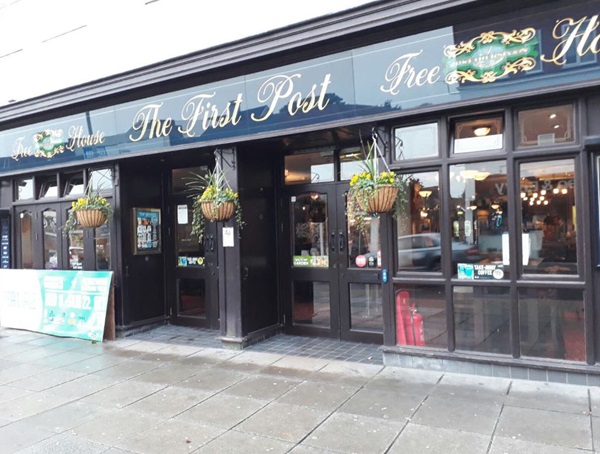
If you have information on the history of this pub, then we’d like you to share it with us. Please e-mail all information to: pubhistories@jdwetherspoon.co.uk